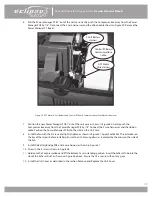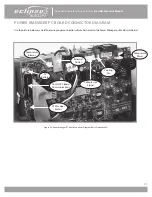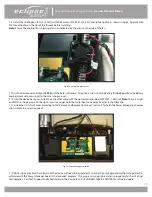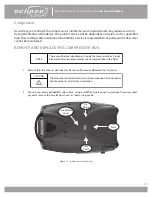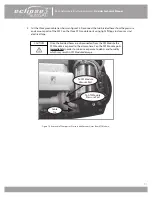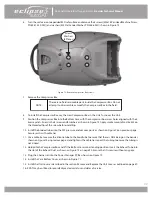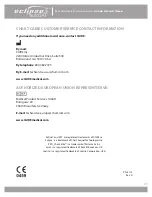
Personal Ambulatory Oxygen System
Provider Technical Manual
92
Screws
Washers
(4 Places)
6. Turn the unit over onto a padded ESD safe surface and remove the 4 screws (M4x16 Pan Head Machine Screw ,
PN 6961-420-SEQ) and washers (M4 Flat Fender Washer, PN 3568-SEQ) shown in Figure 75.
Figure 75: Remove Compressor Box screws.
7. Remove the Compressor Box.
8. To install the Compressor Box, Lay the new Compressor Box in the Unit. Turn over the Unit.
9. Position the Compressor Box into the Bottom Case with the compressor box screw holes aligned with the 4
brass eyelets. Screw in the 4 screws and 4 washers as shown in Figure 75. Apply small amount of Loctite 425 on
the threaded tips of the screw before installing.
10. Install the braided tubes into the ATF pressure and vacuum ports as shown on Figure 74 on previous page.
Secure joints with cable ties.
11. Use a cable tie to secure the silicone tube to the braid tube to ensure that there is NO kinking on the bend as
shown on Figure 74 on previous page. Hand tightens the cable tie. Inspect the tubing to ensure the tubing is
not kinked.
12. Hold onto the Compressor Box and lift the Bottom Case into a standing position. Insert the Exhaust Tube into
the slot of the Exhaust Duct as shown on Figure 73 on page 90. Ensure that it is secure without any gaps.
13. Plug the 3 harnesses into the Power Manager PCB as shown on Figure 72.
14. Install the Case Bottom Cover as shown in Figure 71.
15. Install the Unit Cover as described in the section Remove and Replace the Unit Cover as outlined on page 49.
16. EDAT may be utilized to record Eclipse device status and dates of service.
NOTE:
There are no field serviceable parts inside the Compressor Box. Do not
attempt to disassemble or modify the Compressor Box in the field.





